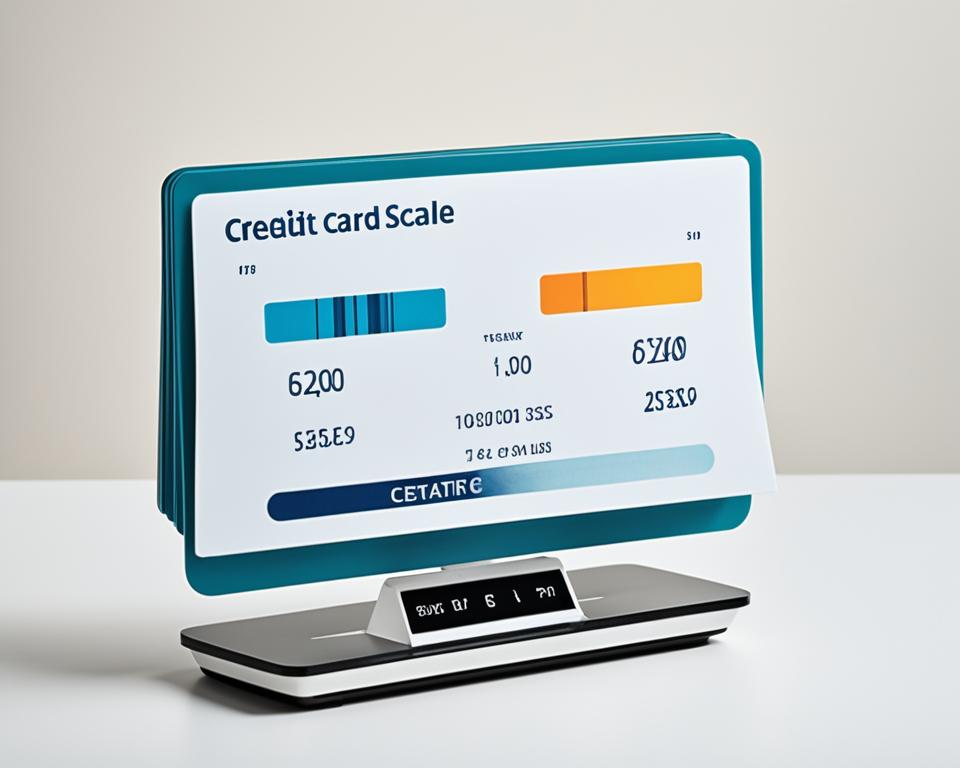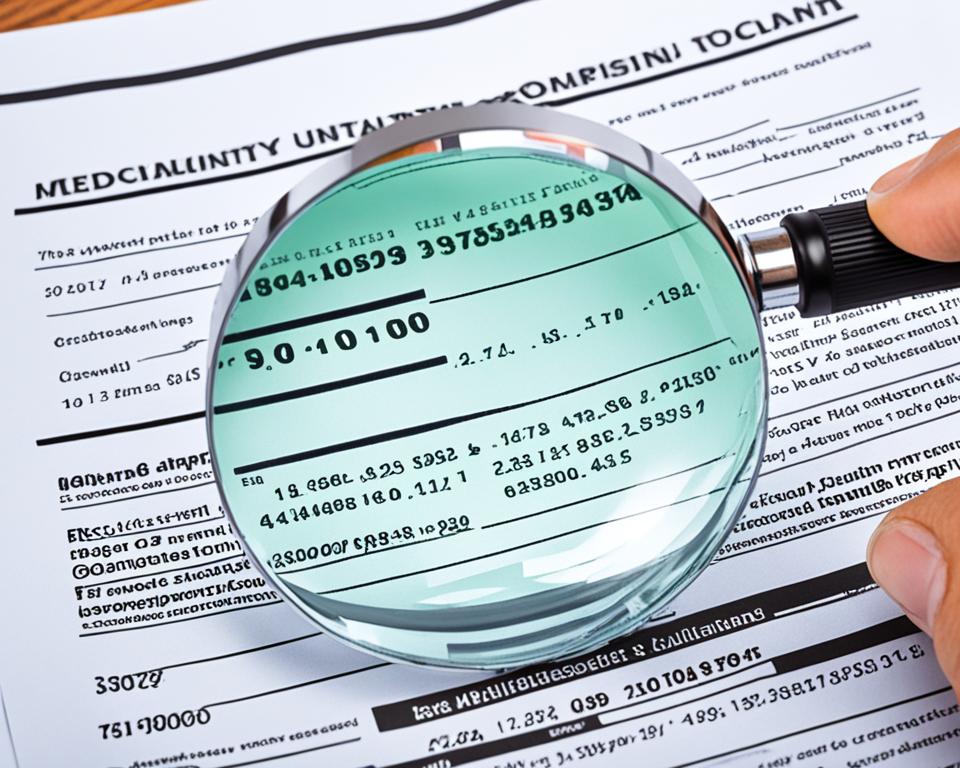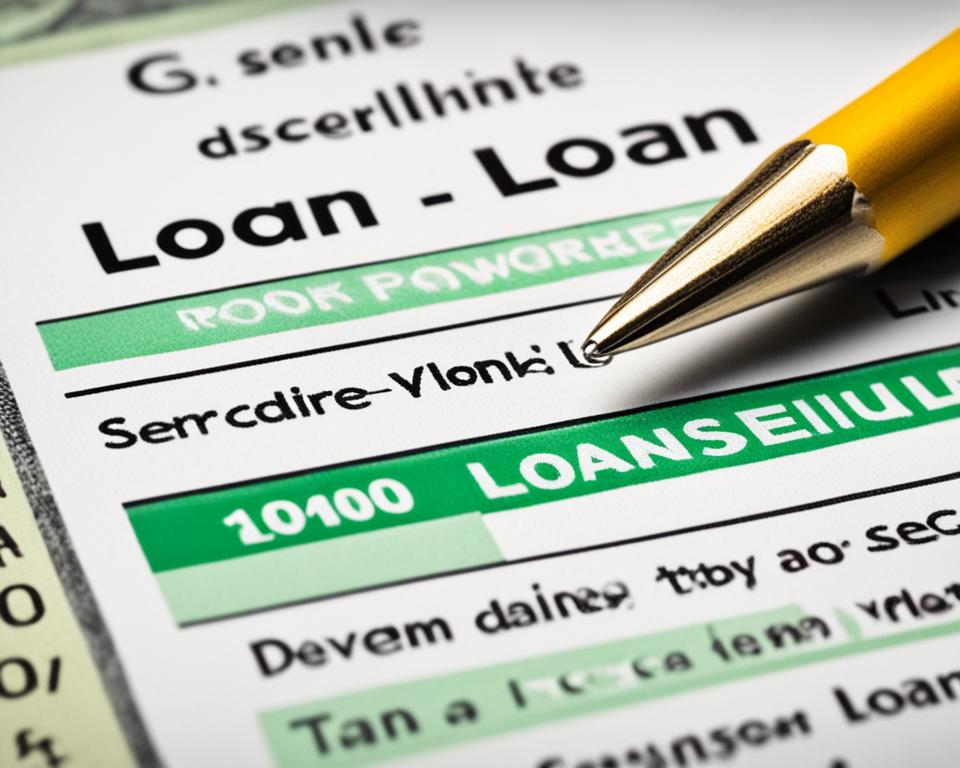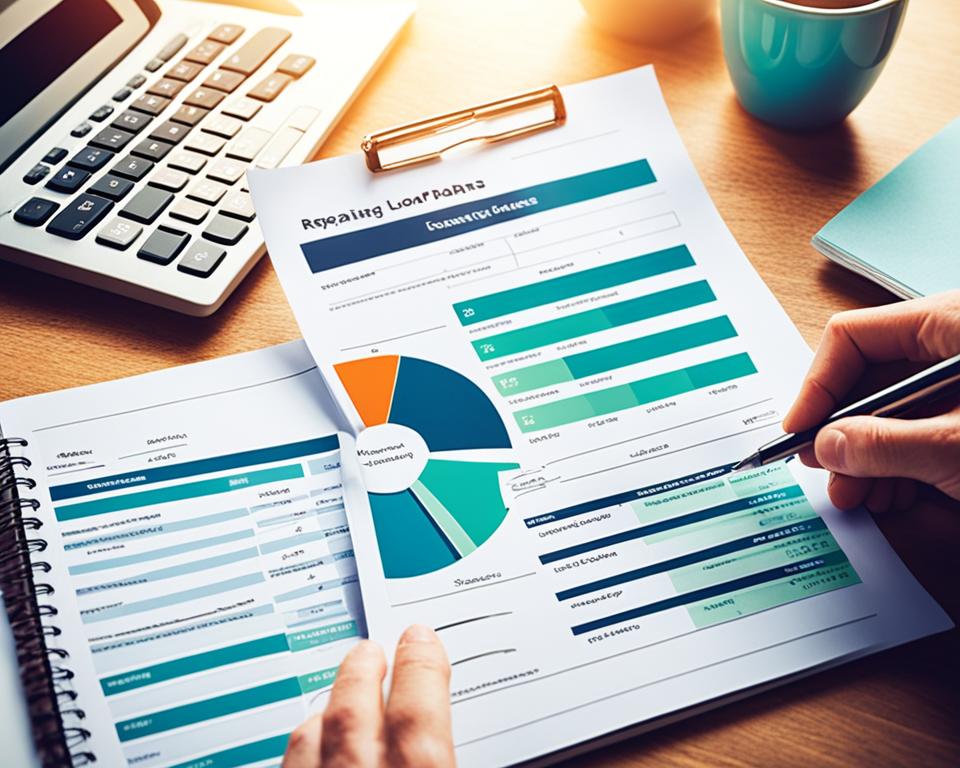As a first-time borrower, there are a few important things to consider before taking out your first loan. Personal loans offer a flexible financing option for life’s big purchases and consolidating debt. However, it’s crucial to understand the key factors that can impact your borrowing experience.
Before diving into the world of personal loans, it’s essential to determine the amount of money you need. This will help you select the right loan type and lender that can meet your specific financial needs. Additionally, understanding the repayment terms, including the loan term and monthly payments, will allow you to plan and budget effectively.
One of the most important factors to consider when borrowing for the first time is the interest rate. The interest rate on personal loans can vary significantly depending on your credit score, the loan amount, and the repayment term. It’s crucial to compare rates from different lenders and secure the best possible interest rate to save money in the long run.
Moreover, evaluating your ability to afford the monthly payments is vital. You need to assess your current financial situation and determine if the loan payments fit comfortably within your budget. It’s important to strike a balance between a manageable monthly payment and a repayment term that allows you to pay off the loan in a reasonable timeframe.
Finally, it’s worth exploring alternatives to personal loans if they don’t align with your needs or financial situation. Other options, such as balance transfer credit cards or home equity loans, may offer more favorable terms or better suit your specific requirements.
To ensure a successful borrowing experience as a first-time borrower, it’s crucial to gather all the necessary information, compare options, and make an informed decision that aligns with your financial goals and capabilities.
Key Takeaways:
- Understand the amount of money you need and borrow accordingly.
- Consider the loan term and monthly payment amount to ensure they fit within your budget.
- Compare interest rates from different lenders to secure the best possible rate.
- Assess your ability to afford the monthly payments before taking out a loan.
- Explore alternative options if a personal loan doesn’t meet your needs or financial situation.
How much money do I need?
When considering taking out a personal loan, one of the first questions you need to answer is: how much money do I need? The loan amount you require will play a crucial role in determining which borrowing options are available to you.
Personal loans typically have a minimum borrowing amount set by lenders, with most starting at around $1,000 to $2,000. If you need a smaller amount, such as less than $500, it may be more convenient to save the money, utilize a credit card, or seek assistance from friends or family. Alternatively, if you require a smaller loan, PenFed, a federal credit union, offers options starting at $600.
It’s important to choose a loan amount that aligns with your specific financial needs. Assess your budget and determine the exact amount you require to achieve your goals or address your financial challenges.
A Comparison of Lenders and Loan Amounts:
| Lender | Minimum Loan Amount |
|---|---|
| Bank A | $1,000 |
| Bank B | $1,500 |
| Bank C | $2,000 |
| PenFed | $600 |
This table provides a comparison of lenders and their minimum loan amounts. Remember, these amounts can vary, so it’s best to research and compare different lenders to find the one that offers the loan amount that meets your specific needs.
How long will I have to pay it back?
When considering a personal loan, it’s important to understand the loan term or repayment period. Personal loans typically offer a range of repayment terms, which can vary from as short as six months to as long as seven years. The loan term you choose has a direct impact on both your interest rate and your monthly payment amount.
It’s crucial to assess your financial situation and choose a loan term that allows you to comfortably pay off the loan within a reasonable time frame. While longer loan terms may result in lower monthly payments, they also mean more interest paid over time. On the other hand, shorter loan terms often come with higher monthly payments but can save you money on interest in the long run.
Many lenders offer flexibility in repayment terms, allowing you to select a duration that suits your needs. This can be particularly beneficial if you have a specific timeframe in mind for paying off your loan or if you anticipate changes in your financial situation.
To illustrate the impact of loan term on monthly payments, consider the following example:
| Loan Amount | Interest Rate | Loan Term | Monthly Payment |
|---|---|---|---|
| $10,000 | 8% | 3 years | $314.79 |
| $10,000 | 8% | 5 years | $202.76 |
In the example above, extending the loan term from 3 years to 5 years significantly lowers the monthly payment, but the total amount repaid over the life of the loan increases.
It’s important to carefully consider your financial goals and capabilities when choosing a loan term. If you have the means to make higher monthly payments and aim to pay off your loan quickly, a shorter loan term may be the right choice for you. However, if you prefer lower monthly payments and are comfortable paying more in interest over time, a longer loan term could be more suitable.
Remember that each individual’s financial situation is unique, so it’s essential to evaluate and select a loan term that aligns with your specific needs and financial goals.
How much interest will I pay?
The interest rate on a personal loan is influenced by several factors, including your credit score, the loan amount, and the repayment term. Interest rates can vary widely, ranging from as low as 5.99% to over 29.99%. Borrowers with good or excellent credit scores and shorter repayment terms typically qualify for the lowest interest rates. On average, the APR for 24-month personal loans is approximately 12.17%.
Comparing interest rates from different lenders is crucial to finding the best possible rate. By shopping around and obtaining quotes from various lenders, you can ensure that you secure a personal loan with a competitive interest rate that suits your financial situation.
To give you a better understanding of the interest rates available, here is a table showing the approximate interest rates based on credit scores:
| Credit Score | Interest Rate Range |
|---|---|
| Excellent (720-850) | 5.99% – 9.99% |
| Good (690-719) | 10.99% – 14.99% |
| Average (630-689) | 15.99% – 21.99% |
| Below Average (580-629) | 22.99% – 26.99% |
| Poor (Below 580) | 27.99% – 29.99% |
Keep in mind that these ranges are approximate and can vary depending on the lender. Your credit score is a significant factor in determining the interest rate you qualify for, so it’s essential to maintain a good credit score or work on improving it before applying for a personal loan.
As seen in the table and image above, individuals with higher credit scores generally qualify for lower interest rates, while those with lower credit scores tend to face higher interest rates. This emphasizes the importance of maintaining a good credit score and managing your financials responsibly.
When comparing interest rates, pay attention to the Annual Percentage Rate (APR). The APR takes into account not just the interest rate but also any additional fees or charges associated with the loan. It provides a more accurate reflection of the total cost of borrowing. Make sure to review and compare the APRs offered by different lenders to make an informed decision.
Now that we’ve explored the topic of interest rates, let’s move on to discussing the affordability of monthly payments.
Can I afford the monthly payments?
Before taking out a personal loan, it’s crucial to assess whether you can afford the monthly payments. Lenders typically offer different repayment plans based on your income level and cash flow. While lower monthly payments may be tempting, opting for longer repayment terms can result in higher overall interest payments. It’s generally recommended to allocate no more than 35% to 43% of your monthly income towards debt, including mortgage, car loans, and personal loan payments. Keeping your total debt obligations within this range is essential to maintaining financial stability.
When considering the affordability of monthly payments, it’s important to calculate your debt-to-income ratio. This ratio compares your monthly debt obligations to your monthly income and helps lenders assess your ability to pay back the loan. To calculate your debt-to-income ratio, add up all your monthly debt payments and divide the total by your gross monthly income. Multiply the result by 100 to get the ratio as a percentage.
Here’s an example to illustrate:
| Monthly Debt Obligations | Gross Monthly Income | Debt-to-Income Ratio |
|---|---|---|
| $1,500 | $4,000 | 37.5% |
In this example, the monthly debt obligations amount to $1,500, while the gross monthly income is $4,000. Dividing $1,500 by $4,000 gives a debt-to-income ratio of 0.375, or 37.5% when multiplied by 100. This demonstrates that the monthly debt payments account for 37.5% of the borrower’s income.
It’s important to note that different lenders may have varying requirements for the debt-to-income ratio. Some lenders may be more lenient, allowing higher ratios, while others may prefer lower ratios to ensure borrowers have sufficient disposable income for other expenses.
Understanding the Importance of Debt-to-Income Ratio
The debt-to-income ratio is a crucial metric for both lenders and borrowers. It helps lenders assess the risk of extending credit and determines the borrower’s ability to manage additional debt. For borrowers, maintaining a healthy debt-to-income ratio is essential for financial stability and avoiding excessive debt.
While the recommended range is 35% to 43%, it’s important to remember that individual circumstances may vary. Factors such as the borrower’s credit history, savings, and other financial responsibilities should also be taken into account when determining the affordability of monthly payments.
Does the personal loan have fees?
When considering a personal loan, it’s important to understand the potential fees associated with borrowing. While most personal loans do not charge application or prepayment fees, there may be an origination fee that you need to be aware of. An origination fee is a one-time charge deducted from the loan amount, and it can vary depending on the lender.
The origination fee is typically a percentage of the loan amount, ranging from 1% to 5%. For example, if you’re taking out a $10,000 loan with a 3% origination fee, the fee would be $300. This fee is usually deducted upfront, meaning you’ll receive the loan amount minus the origination fee.
Comparing different lenders and their fee structures is crucial to finding the most favorable terms for your personal loan. By exploring your options, you may be able to find lenders that offer loans with lower or no origination fees. Avoiding or minimizing origination fees can save you money in the long run, especially if you’re taking out a larger loan.
Comparing Origination Fees of Different Lenders
| Lender | Origination Fee |
|---|---|
| ABC Bank | 1% |
| XYZ Credit Union | 2.5% |
| Quick Loans | 3.5% |
| Best Rate Finance | No fee |
As the table above shows, different lenders may have varying origination fees. By comparing the fees of different lenders, you can make an informed decision and choose a loan that aligns with your financial goals.
Remember to read the loan agreement carefully and ask the lender any questions you may have regarding fees or additional charges. Being aware of all the costs involved will help you make a well-informed decision and ensure that the personal loan you choose is the right fit for your financial needs.
Do I have a good enough credit score?
Your credit score plays a significant role in determining your eligibility for a personal loan and the interest rate you’ll receive. Most lenders prefer borrowers with a credit score of 690 or above. However, some lenders specialize in working with borrowers with bad credit. Credit unions may offer lower interest rates and more flexible terms to borrowers with fair or average credit scores. It’s important to know your credit score and improve it if necessary before applying for a personal loan to increase your chances of approval and secure better terms.
What other options do I have?
If a personal loan doesn’t meet your requirements, there are alternative options to consider. Let’s explore some of these options:
1. Balance transfer credit card
If you’re looking to save money on interest, especially when consolidating credit card debt, a balance transfer credit card can be an excellent alternative. Some credit cards offer a 0% introductory APR for a certain period, allowing you to transfer your existing balances without incurring interest charges. This can provide temporary relief and help you pay off your debt faster.

2. Home equity loan
If you own a home and have built up equity, a home equity loan can be a viable option. These loans allow you to borrow against the value of your home and typically offer lower interest rates compared to personal loans. However, keep in mind that failure to repay the loan could result in the loss of your home.
3. Personal line of credit
A personal line of credit functions similarly to a credit card, where you have access to a predetermined credit limit. You can withdraw funds as needed and only pay interest on the amount borrowed. This flexible borrowing option provides convenience and can be useful for ongoing or unpredictable expenses.
4. Peer-to-peer loan
Peer-to-peer lending platforms connect borrowers directly with individual investors, cutting out traditional financial institutions. These loans often have competitive interest rates and flexible terms. Peer-to-peer lending can be a fruitful alternative if you’re unable to secure a personal loan from a bank or credit union.
5. Retirement plan loan
If you have a retirement savings plan, such as a 401(k) or an IRA, you may be able to borrow against it. Retirement plan loans generally have lower interest rates compared to personal loans, and you’re essentially borrowing from yourself. However, it’s crucial to consider the potential impact on your future retirement savings before taking this route.
Each alternative has its own advantages and disadvantages. It’s important to evaluate them based on your specific needs, financial situation, and long-term goals. Take the time to research and compare the terms and conditions offered by different lenders to make an informed decision.
How soon do I need the money?
The urgency of your cash needs is a critical factor to consider when choosing a lender for your personal loan. Depending on the lender, the loan funding timeline can vary significantly. While some lenders may take up to 10 business days to provide the funds, others offer same-day or next-day funding options.
If you have urgent cash needs and require quick access to funds, it is advisable to consider lenders like LightStream that provide same-day funding. By choosing a lender that offers expedited funding, you can ensure that your financial needs are met promptly.
“When you have urgent cash needs, time is of the essence. Opting for a lender that offers same-day funding can provide you with the necessary financial assistance right when you need it.”
When comparing lenders, it’s essential to factor in the loan funding timeline as part of your decision-making process. By selecting a lender that aligns with your timeline, you can avoid unnecessary delays and address your urgent cash needs with ease.
Loan Funding Timeline Comparison
| Lender | Funding Timeline |
|---|---|
| LightStream | Same day |
| XYZ Bank | 2-3 business days |
| ABC Credit Union | Next business day |
| PQR Online Lending | Up to 10 business days |
As shown in the table above, different lenders have varying loan funding timelines. While LightStream provides same-day funding, XYZ Bank may take 2-3 business days, ABC Credit Union offers next business day funds, and PQR Online Lending may take up to 10 business days to provide the funds.
By carefully considering the loan funding timeline, you can make an informed decision and choose the lender that best meets your urgent cash needs.
How will it affect my credit score?
Taking out a personal loan can have a significant impact on your credit score, both positively and negatively. It all depends on how you manage the loan and make your repayments. Let’s explore the potential effects on your credit score and how you can ensure a positive outcome.
Positive Impact: Building Credit History
When you take out a personal loan and make timely payments, it can contribute to building a positive credit history. Your payment history is the most crucial factor in determining your credit score, accounting for about 35% of the total. By consistently making your loan payments on time and in full, you demonstrate financial responsibility and reliability to lenders, which can help improve your credit score over time.
Maintaining a good credit history is essential for future borrowing needs, such as getting approved for mortgages, car loans, or other forms of credit. A solid credit score can open doors to better loan terms, including lower interest rates, saving you money in the long run.
Positive Impact: Credit Utilization Ratio Reduction
If you use a personal loan to consolidate high-interest debt, such as credit card balances, it can lower your credit utilization ratio. Your credit utilization ratio is the amount of available credit you’re using, expressed as a percentage. It’s another significant factor affecting your credit score, accounting for approximately 30% of the total.
By paying off credit card debt with a personal loan, you reduce your credit utilization ratio, which can positively impact your credit score. Lowering your credit utilization shows lenders that you’re effectively managing your available credit, which is seen as responsible behavior.
Negative Impact: Missed Payments and Default
On the flip side, if you miss loan payments or default on your personal loan, it can have a severe negative impact on your credit score. Payment history carries substantial weight in credit scoring models, making up the largest portion of your score. Any missed payment or default can significantly damage your creditworthiness and make it harder to secure financing in the future.
Therefore, it’s crucial to budget and plan your finances carefully to ensure that you can comfortably afford the monthly loan payments. Set up automatic payments or reminders to avoid missing due dates and damaging your credit history.
Monitoring and Maintaining Good Credit
As you navigate your personal loan journey, it’s essential to monitor your credit score regularly. You can access your credit report for free once a year from each of the three major credit bureaus: Equifax, Experian, and TransUnion. By reviewing your credit report, you can identify any inaccuracies or potential issues that may be affecting your credit score.
In addition to monitoring, it’s crucial to maintain good credit habits even after you’ve paid off your personal loan. Responsible credit card usage, timely bill payments, and avoiding unnecessary debt can help you build and maintain a positive credit history over the long term.
Conclusion
As a first-time borrower, it’s essential to consider several key factors to ensure a successful borrowing experience. When taking out a personal loan, carefully evaluate the loan amount, repayment terms, interest rates, monthly payments, and fees. By thoroughly assessing your financial needs and comparing different lenders, you can make an informed decision and choose a loan that fits your requirements.
Additionally, assessing your credit score is crucial in determining your eligibility and the interest rate you’ll receive. Make an effort to improve your credit score if necessary, as it can greatly impact your borrowing options and terms. Exploring alternatives to personal loans, such as balance transfer credit cards or other types of loans, can also be a viable option depending on your specific needs.
Remember, responsible borrowing is key to maintaining financial stability. Before committing to a personal loan, ensure that you can comfortably afford the monthly payments and manage your debt within an acceptable range of your income. By following these expert tips, you can navigate the loan process with confidence and have a successful borrowing experience, improving your financial well-being in the long run.
FAQ
What should I know before taking out my first loan?
Before taking out your first loan, it’s important to understand key factors such as the amount of money you need, the repayment terms, interest rates, monthly payments, and fees. It’s also crucial to consider your credit score and explore alternatives to personal loans if necessary.
How much money do I need?
The amount of money you need will determine the type of loan you should consider. Personal loans typically have a minimum borrowing amount, with most lenders starting at around $1,000 to $2,000. It’s essential to choose a loan amount that matches your specific financial needs.
How long will I have to pay it back?
Personal loans typically come with repayment terms ranging from six months to seven years. It’s important to consider your financial situation and choose a loan term that allows you to comfortably pay off the loan within a reasonable time frame.
How much interest will I pay?
The interest rate on a personal loan depends on several factors, including your credit score, the loan amount, and the repayment term. It’s important to compare rates from different lenders to ensure you get the best possible interest rate.
Can I afford the monthly payments?
Before taking out a personal loan, it’s crucial to assess whether you can afford the monthly payments. Keeping your total debt obligations within a certain range is essential to maintaining financial stability.
Does the personal loan have fees?
Most personal loans do not charge application or prepayment fees. However, some lenders may impose an origination fee, which is a one-time charge deducted from the loan amount. It’s important to compare different lenders and their fee structures to find the most favorable terms.
Do I have a good enough credit score?
Your credit score plays a significant role in determining your eligibility for a personal loan and the interest rate you’ll receive. It’s important to know your credit score and improve it if necessary before applying for a personal loan to increase your chances of approval and secure better terms.
What other options do I have?
If a personal loan doesn’t meet your requirements, there are alternative options to consider. Balance transfer credit cards, home equity loans, personal lines of credit, and peer-to-peer loans are other alternatives worth exploring.
How soon do I need the money?
The urgency of your cash needs may impact the lender you choose. Some lenders may take up to 10 business days to provide the funds, while others offer same-day or next-day funding. It’s essential to factor in the funding timeline when comparing lenders and choosing the one that best aligns with your timeline.
How will it affect my credit score?
Taking out a personal loan can have a positive impact on your credit score if you make your payments on time and in full. However, missing payments or defaulting on a loan can lower your credit score. Monitoring your credit score and maintaining a good credit history is important for long-term financial health.
Conclusion
When taking out a personal loan for the first time, it’s important to consider key factors such as loan amount, repayment terms, interest rates, monthly payments, and fees. Assessing your credit score and exploring alternatives can help you make an informed decision. It’s crucial to borrow responsibly and ensure that you can afford the monthly payments. By following these tips and strategies, you can navigate your loan journey with confidence and have a successful borrowing experience.





